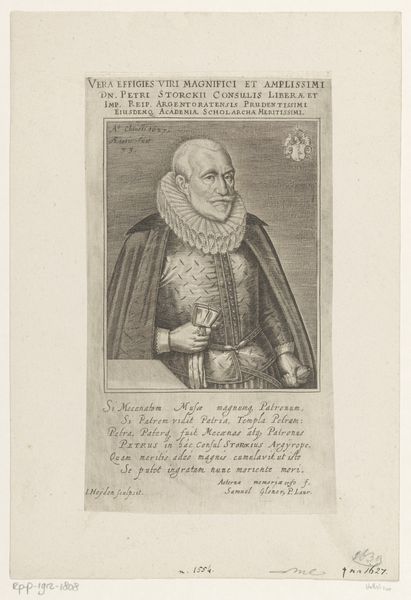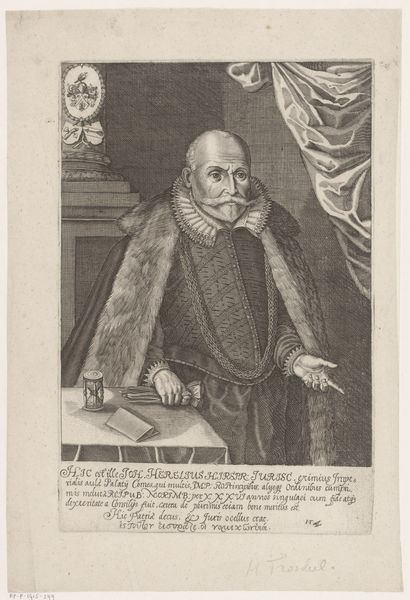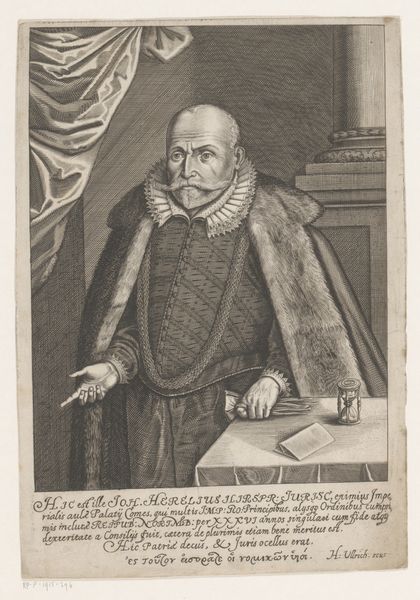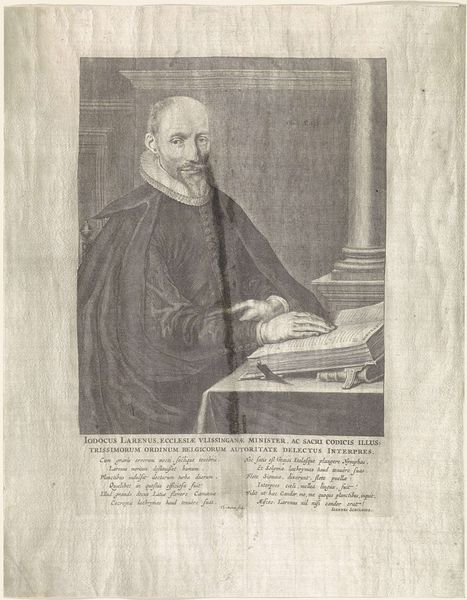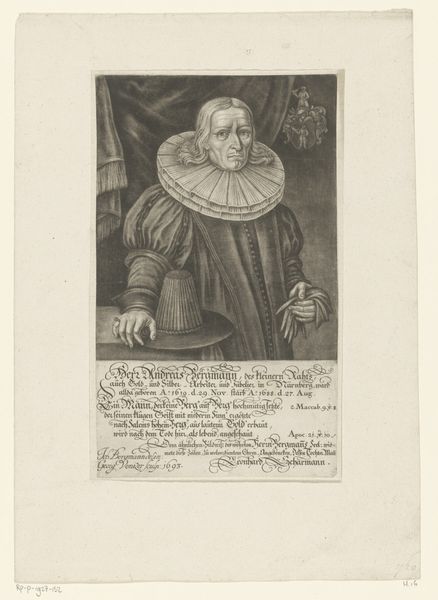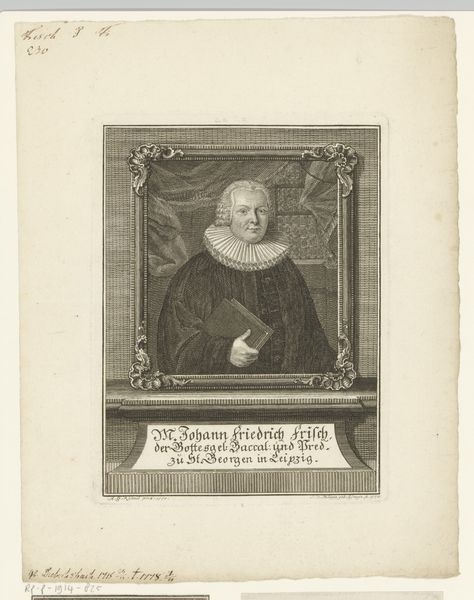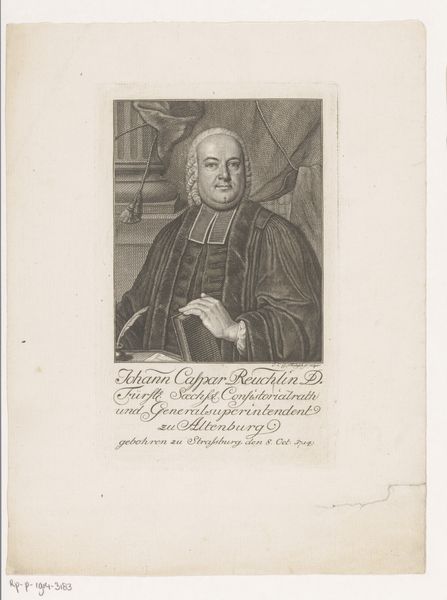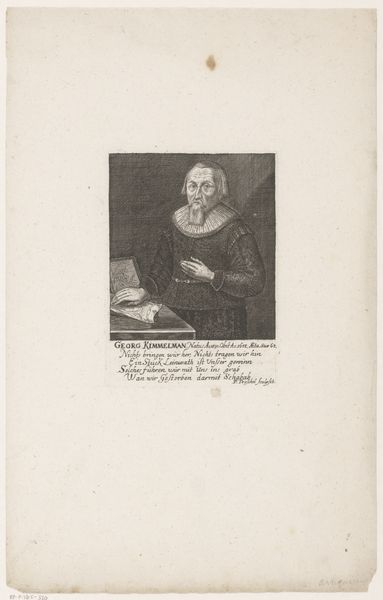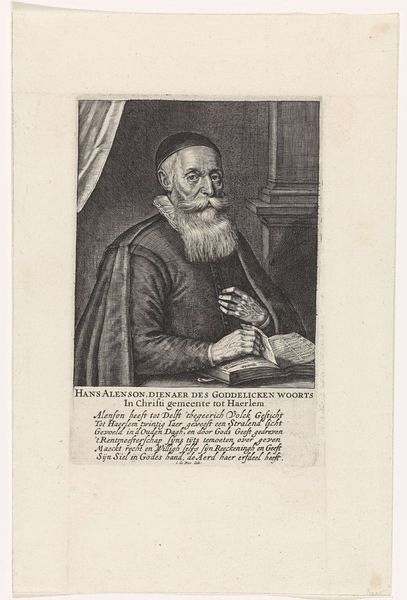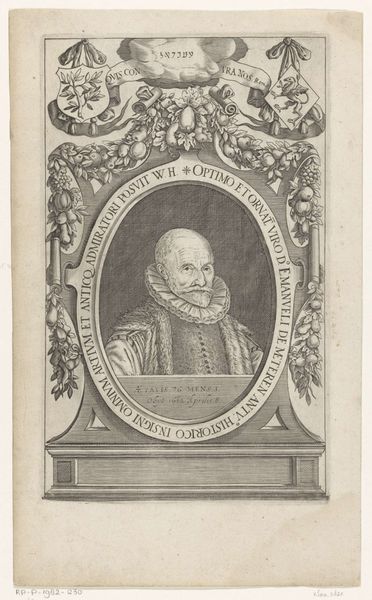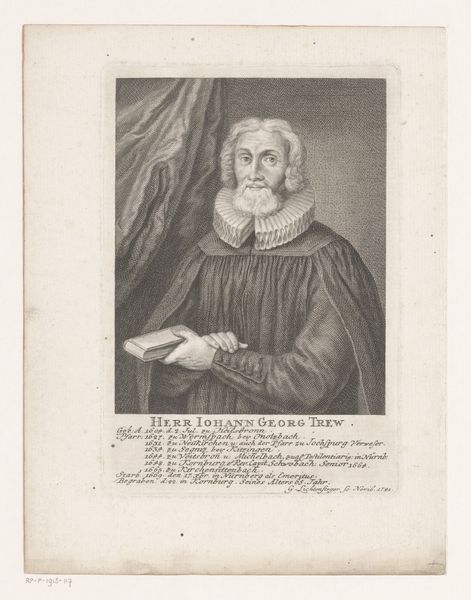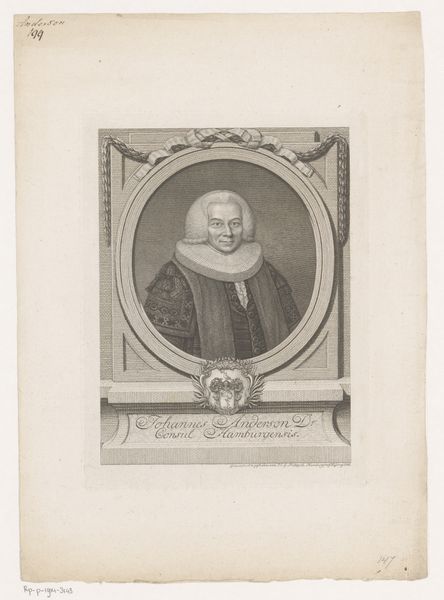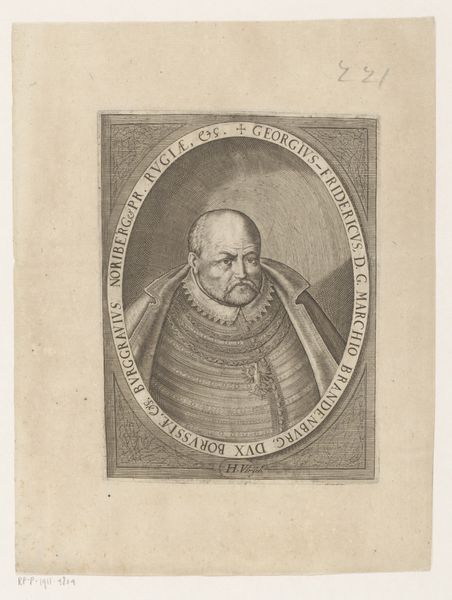
print, paper, engraving
#
portrait
#
baroque
# print
#
book
#
pencil sketch
#
old engraving style
#
paper
#
history-painting
#
engraving
Dimensions: height 165 mm, width 155 mm
Copyright: Rijks Museum: Open Domain
Curator: Andreas Nunzer’s "Portret van Philipp Camerarius," an engraving on paper, created in 1740, offers a glimpse into the world of an 18th-century scholar. The piece currently resides at the Rijksmuseum. I am particularly interested in how this work constructs Camerarius’s identity as a learned man. Editor: It's definitely striking. The stark contrasts created through the engraving immediately give it a serious, almost somber mood. The details in his robes, the texture of the book – there's a real dedication to materiality present. Curator: Precisely. Let's consider the sitter: Philipp Camerarius was a significant jurist and scholar. This print functions within a network of visual and textual representation designed to elevate his status. How does the inclusion of the book, its very materiality rendered so carefully, reinforce notions of intellectual authority tied to gender and class at the time? Editor: You know, the book grabs my attention too. It is like a tool of his trade. The method of production is also very significant—it's an engraving. This speaks volumes about how knowledge was disseminated and consumed during that era, highlighting access to learning through print. How does the artistic rendering serve its social function? Curator: The Baroque style further reinforces this idea. Note the attention to detail, the slight idealization, yet within a clearly defined social hierarchy. It reflects broader patterns of representation concerning male intellect. And, of course, let's think about the purpose: Was it intended for personal commemoration or for broader circulation to bolster a particular ideological framework tied to scholarly excellence and legacy? Editor: Thinking about it from that perspective helps reveal so much. How it served, not just the individual, but this elite class! It speaks volumes about their means of cultural production. This isn't just art; it’s about reinforcing social fabric through these meticulous, labor-intensive methods of image-making. Curator: Exactly. It reveals how powerful images help craft narratives surrounding knowledge, status, and power. These artworks remind us that representations never merely reflect, but also actively shape social perception and cultural values. Editor: I hadn’t considered it that way initially, but seeing it now—it all connects to its purpose of material representation. These prints tell stories of power structures!
Comments
No comments
Be the first to comment and join the conversation on the ultimate creative platform.
